Hallux Limitus/hallux rigidus
Arthritis of the Big Toe - Dorsal Bunion
I have no intention of surgery after improvements over a short time.
Hallux Limitus/HALLUX RIGIdUS
Arthritis of the Big Toe - Dorsal Bunion
Explanation and symptoms
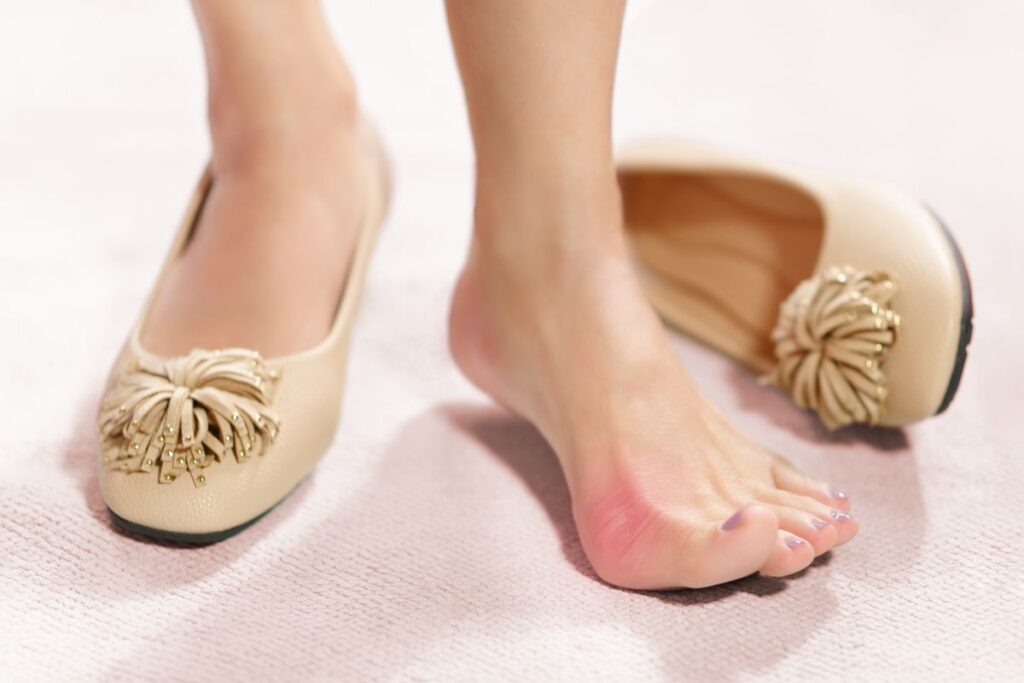
Hallux Limitus – Hallux Rigidus: Are diseases of the first metatarsophalangeal (big toe) joint that affect affect about 2.5% of people older than 50 years. Research shows degenerative changes on x-ray in 10% of the population as early as age of 20.
The difference between hallux rigidus and hallux limitus is that, hallux rigidus is defined as pain due to an arthritic and immovable joint. While hallux limitus is defined as functional pain and limited motion due to soft tissue tightness which may or may not involve arthritis.
Hallux Rigidus goes untreated as the joint has fused naturally and is no longer painful.
Classic symptoms of Hallux Limitus and Hallux Rigidus are:
- Pain and stiffness in the big toe joint, especially with motion. This is usually the first symptom noticed. The pain is typically felt on the top or sides of the joint.
- Swelling and inflammation around the big toe joint.
- A bump or bone spur, called a dorsal bunion may develop on top of the joint as the condition progresses.
- A decreased range of motion in the big toe and difficulty bending it up or down. This gets progressively worse as the arthritis advances.
- Tenderness when pressure is applied to the big toe joint.
- In hallux rigidus, the toe will become stiff and completely rigid over time due to the loss of cartilage and increased bone-on-bone friction.
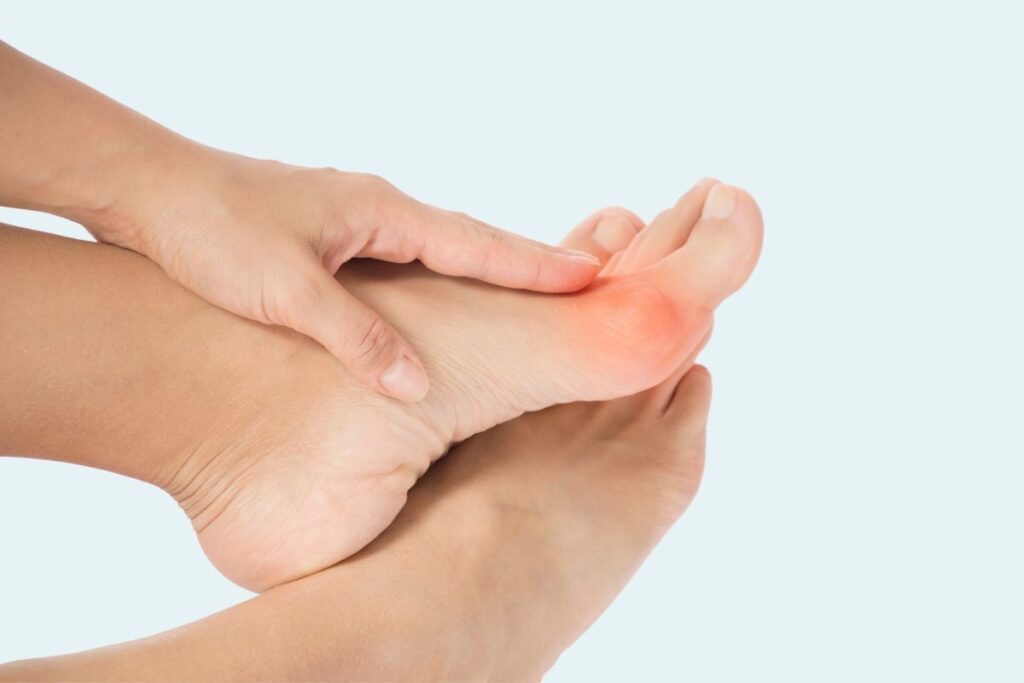
Traditional Treatment Model
The goal of the Traditional Treatment Model is symptom management

Injections

Orthotics/Toe Spacers

Surgery

Special footwear to redistribute forces
When receiving this diagnosis, most people are told that the they need to invest in orthotics, Hoka sneakers or other accommodating shoes and wait until the symptoms are bad enough to require surgery.
Hoka’s and other accommodating shoes, do just that. They accommodate the problem by offsetting the demands on the joint. And this is an important step in preventing changes in walking and potentially pain-relief, however, this will not resolve the problem. And left untreated your condition will worsen over time and footwear will no longer help.
Orthotics like accommodating footwear offset the demand on the joint by restricting the motion of the toe. Research has shown that orthotics decrease the strength of muscles within the foot, called intrinsic muscles, by 14%. The functioning of the intrinsic muscles is vital for the health of the big toe and recovery from Hallux Limitus. When they become weakened by the disease process and further weakened by orthotics the chances of recovery are slim.
Financially, the average price of; Hoka sneakers is $150 USD and orthotics average $550 USD.
A steroid injection and physical therapy are also an option for treatment in the early stages of this diagnosis.
This is not a curative model but will:
- Buy you time before surgery
- Cost you time and money.
- Slowly diminish your quality of life.
- Cause damage to the 1st MTP and other joints because of a change your walking pattern to accommodate pain.
The condition will become severe over time, requiring the 1st of 2 surgeries.
Hallux Limitus Surgery
1. CHEILECTOMY: SURGERY #1
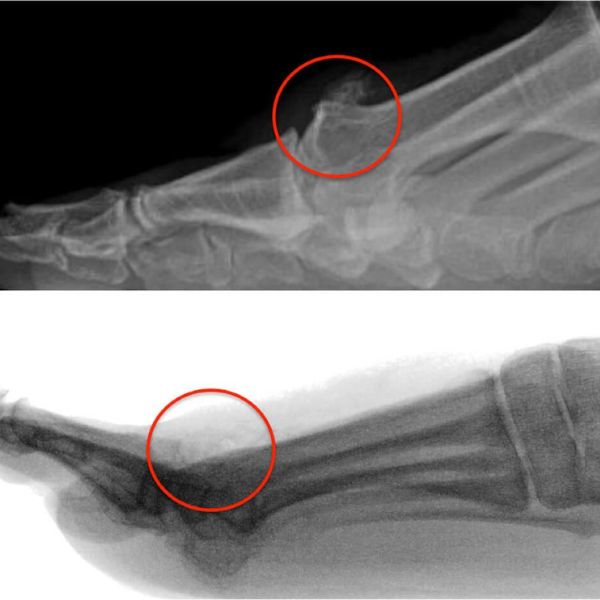
The first surgery that is usually done is called a cheilectomy. Which is a scrapping out of the excess bone to create more space in the joint. This is not a curative surgery but will “buy you more time until you will need another surgery, either an implant or a fusion.
With a cheilectomy surgery the following will happen over time:
- Pain relief from a cheilectomy may last 1-5 years on average before pain starts to return. The effects are often temporary because arthritis is a progressive condition.
- Bone spurs and joint deformity can rebuild, leading to stiffness and pain coming back.
- Because the root cause of Hallux Rigidus is not addressed with surgery, eventually the space opened up by the cheilectomy fills back in, and symptoms return and continue to worsen.
- In some cases, because the root cause was never addressed, the increased joint mobility gained after a cheilectomy can contribute to faster degeneration of the joint over time.
2. FUSION: SURGERY #2, OPTION A
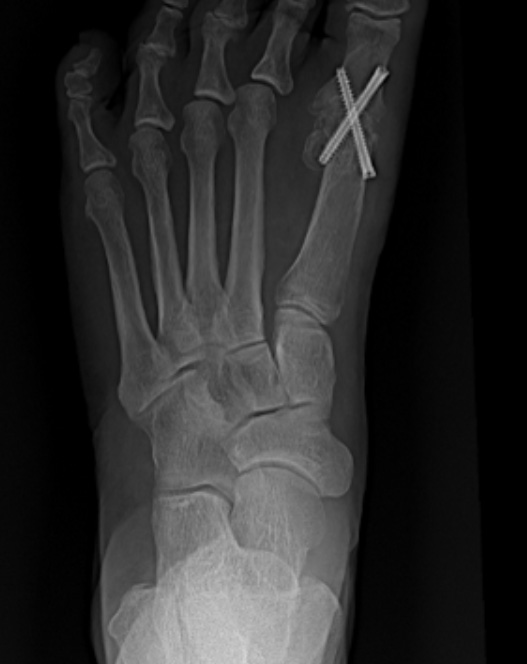
This is when the joint is made immobile using metal hardware to fuse the 1st MTP joint together (think of nail holding the two bones together). There is a 5-10% failure rate meaning that the bones will not fuse. There is 80% patient satisfaction with the result. The complication rate is no different than other orthopedic procedure with infections being the most common. Return to activity is usually after 6 months. Any activity requiring movement of the big toe will not be possible. There may also be a loss of agility and balance.
With a fusion surgery the following will happen over time:
- Your walking pattern and big toe mobility is permanently compromised.
- Your balance will become diminished placing you at a high risk for falling,
- You are severely limited in your ability to engage in sports and exercise and potentially become more sedentary.
- You will be damaging your knee, hips and back from the changes that will occur with walking.
3. JOINT REPLACEMENT: SURGERY #2, OPTION B
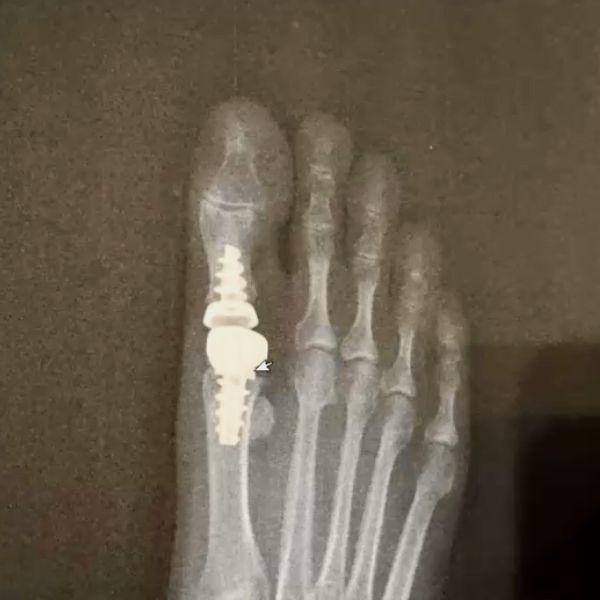
The other surgical option is a joint replacement surgery. This is a better option to preserve function.
However, this is a newer surgery, other problems at the joint can occur, and results can vary.
With any surgery there are risks of minor and serious complications such as infection, amputation, and even death.
The important thing to note is that none of these options fix the problem, which is an abnormal forces, intrinsic muscle weakness, and poor quality of motion within the 52 joints of the foot and external to it.
I realize that as a patient reading this prognosis it can be perceived as negative.
But I am here to tell you that natural, non-surgical, treatment of Hallux Limitus is possible.
FUNCTIONAL CORRECTIVE TREATMENT MODEL
functional corrective Treatment Goals:
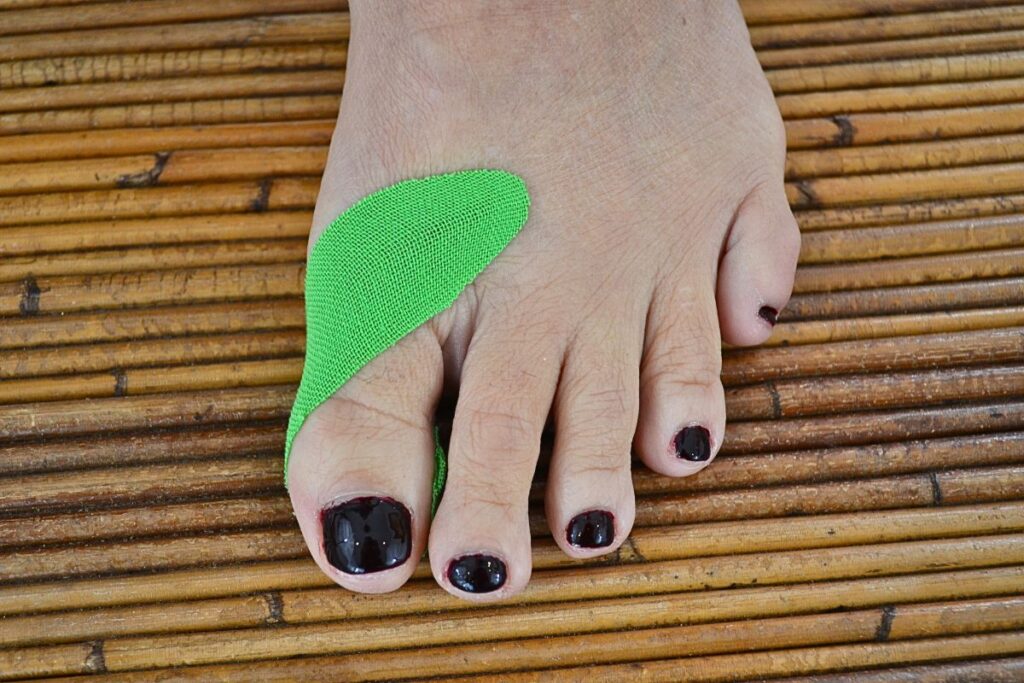
- Decrease inflammation and therefore pain
- Stabilize the joint
- Change the forces that are causing stress
- Prevent future problems directly or indirectly related to this diagnosis
There are over a hundred connective tissues and 56 joints that can cause abnormal forces leading to Hallux Limitus. These abnormal forces are caused by skeletal misalignment and connective tissue restrictions in the toes, foot, lower leg, thigh and hip regions. Evaluating a person’s quality of motion using a tool called Function Diagnostic Evaluation we pinpoint the misalignment and connective tissue restrictions that are causing abnormal forces to act on the joint and injure it. Then we resolve them and address all symptoms using multidimensional treatment model called
The Walker Treatment Method™.
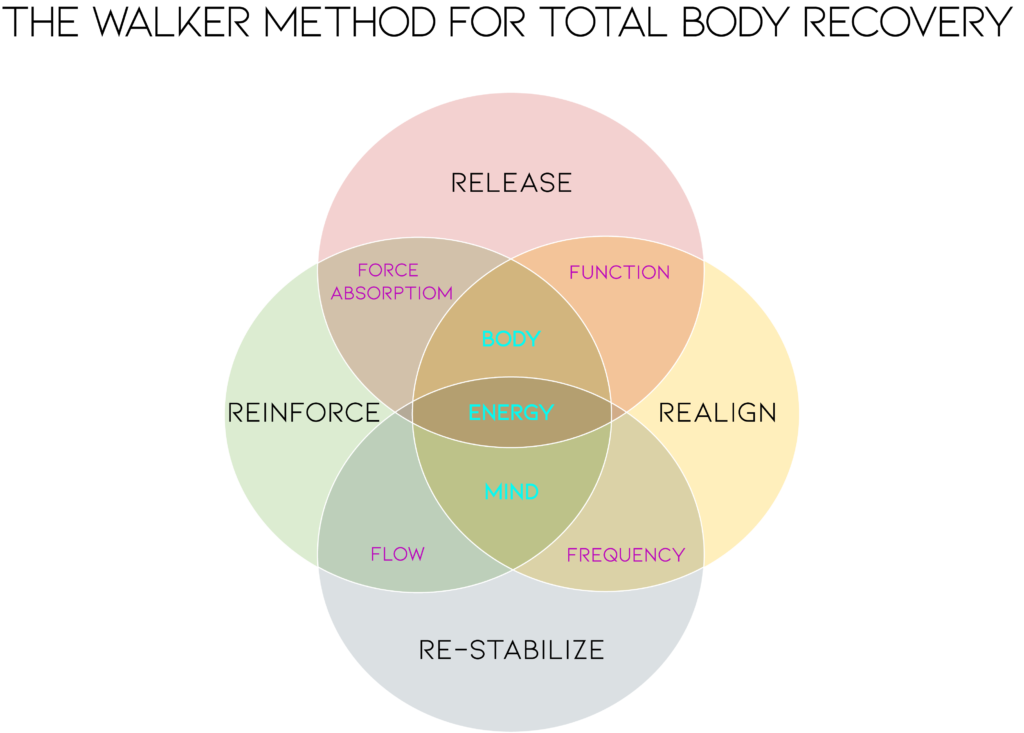
The Walker Treatment Method™
- Decreases inflammation by offsetting the forces on the joint and with non-prescriptive modalities.
- Corrects abnormal forces using manual therapy, specific taping/bracing techniques, and functional exercises.
- Mobilizes the areas of foot and lower leg to decrease the stress on the big toe joint.
- Stabilizes the painful areas by addressing inflammation, functional strengthening, and specific taping.
- Prevents future problems by addressing patient education, release, alignment, and stabilization, of the entire lower body.
- Corrects negative compensations in walking that have occurred due to pain and a lack of motion.
- Address the root causes of the problem providing long-term pain relief.
COMPARISION OF TRADITIONAL TREATMENT AND THE WALKER TREATMENT METHOD™

|
PAIN RELIEF | STABILIZE THE JOINT | CHANGE THE FORCES | PREVENTION FROM FUTURE PROBLEMS | ADDRESSES THE ROOT CAUSE | SUCCESS/SATISFACTION |
|---|---|---|---|---|---|---|
| FOOTWEAR | indirectly | no | yes | no | no | temporary |
| INJECTION/NSAID | possibly | no | no | no | no | temporary |
| ORTHOTICS | indirectly | no | yes | no | no | average 47% |
| TAPING | possibly | yes | yes | no | no | temporary |
| PHYSICAL THERAPY** | possibly | possibly | possibly | possibly | possibly | varies |
| CHEILECTOMY | possibly | no | no | no | no | average 77% |
| FUSION | usually | yes | no | no | no | average 90% |
| JOINT REPLACEMENT | possibly | no | no | no | no | average 85% |
| WALKER METHOD* | indirectly | yes | yes | yes | yes | so far 98% |
**Physical therapy: Results will vary based upon the therapist’s experience. As a patient it is important to inquire the level of experience and success of any professional that you are seeking for help.
*Data is base upon post intervention survey report after program completion.
If you are motivated to resolve Hallux Limitus in a functional corrective manner then consider the following options.
The best time to resolve Hallux Rigidus naturally without surgery, medication, and costly orthotics is when you first experience symptoms.
The second-best time is now.
Not sure what to do?
Schedule a special $79 no BS actionable strategy evaluation.
Spaces are limited for this special offer!
My Story
My first experience with Hallux Limitus was with a middle age active woman who was about to travel to the Caribbean on holiday and wanted to walk on the beach barefoot. She liked to practice yoga and had trouble with planks during her Vinyasa practice. CT scan showed 4mm a bone spur. Her doctor, like many others, did not recommend Physical Therapy, she was referred by a friend to the clinic.
Using what I knew about the big toe from developing The Bunion Solution™ program, I was able to apply principles of The Walker Treatment Method™ to her diagnosis of Hallux Limitus.
After 4 sessions she was able to plank without pain and mange her own self-care using the video instructions that I shared with her.
When she had her second CT scan her bone spur decreased in size. From that point I began reaching out to non-surgical Podiatrists and doctors to work with more Hallux Limitus patients and The Hallux Limitus Solution ™ was born.
References:
- Shoe Modification and Orthotics with Hallux Limitus: https://www.ncbi.nlm.nih.gov/pmc/articles/PMC7944704/
- Hallux rigidus: how do I approach it? https://www.ncbi.nlm.nih.gov/pmc/articles/PMC5434342/
- Long-term results of surgical procedures Valenti approach for hallux rigidus https://pubmed.ncbi.nlm.nih.gov/30850097/
- Orthotic management tactics for hallux limitus: https://lermagazine.com/article/orthotic-management-tactics-for-hallux-limitus#:~:text=Grady%20et%20al%2C%20in%20a,treated%20successfully%20with%20conservative%20care.&text=Of%20those%2C%2084%25%20were%20given,were%20treated%20successfully%20with%20orthoses.
Not sure what to do?
Schedule a special $79 no BS actionable strategy evaluation.
Spaces are limited for this special offer!

Who is DL Walker, BS., MS., Ed, PT?
Deborah L Walker Goetz, BS., MS., Ed, PT is the creator of unique, comprehensive programs, protocols and course work for organizations, professionals and the public.
As a diagnostic detective she works to identify the root cause of dysfunction that that triggers an the experience of disease, pain, and limitation. Working with clients, she creates a strategic plan of action that aligns with their unique circumstances and empowers them to get the results that they are seeking fast.
DL works both online and in person and offers a 30-minute strategic consultation to assist clients in their best next steps.
CLICK HERE to learn more.